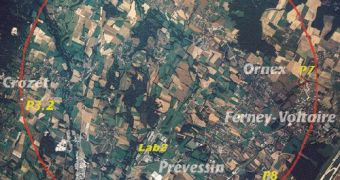Scientists at the European Organization for Nuclear Research (CERN), the group that manages the Large Hadron Collider, announced that the first proton beams had already been injected in the massive particle accelerator, and that they had completed thousands of spins in its tunnels. The 27-kilometer-long facility saw the injection of a clockwise-circulating beam on Friday. CERN officials revealed that a stable beam was established at 10 PM local time last night, ZDNet reports.
The CERN Twitter feed also states that an additional beam of protons, circulating anticlockwise, was introduced in the accelerator's tunnels later yesterday, and that both streams have already completed thousands of rotations inside the Collider. This is the crowning of more than a year of around-the-clock repairs on the world's most advanced physics experiment ever. The $10 billion project saw the collaboration of more than 3,000 scientists from around the world, all working together for the accelerator's initially planned start, in September 2008.
“The LHC is up and running regularly. Operators are adjusting and testing obedient beams,” the Twitter feed added. “The LHC is a far better understood machine than it was a year ago. We've learned from our experience, and engineered the technology that allows us to move on,” added in an official statement Steve Myers, who is the CERN Director for Accelerators. Last night's achievement comes after more than 15 years of work on the construction, testing, and commissioning of the giant accelerator, the largest in the world. The instrument is built under the French-Swiss border, underneath the city of Geneva. Its main goal is to discover the Higgs boson, the hypothesized elementary particle in the Standard Model that allows energy to acquire mass, and vice-versa.
If the Collider discovers the Higgs, it would essentially confirm that the last few decades of physics research were not in vain. That is to say, over these years, no new theories have appeared to explain the basic interactions and make-up of the subatomic scale. If the Higgs is not discovered, then the Model, which is perfectly capable of explaining almost everything around us, will be rendered obsolete, and physicists will start from scratch. But the LHC can achieve the energy levels required by the theoretical models on the Higgs' range. Additionally, hopes are high that the machine will also find signs of supersymmetry, so that particle physics can move forward.

 14 DAY TRIAL //
14 DAY TRIAL //